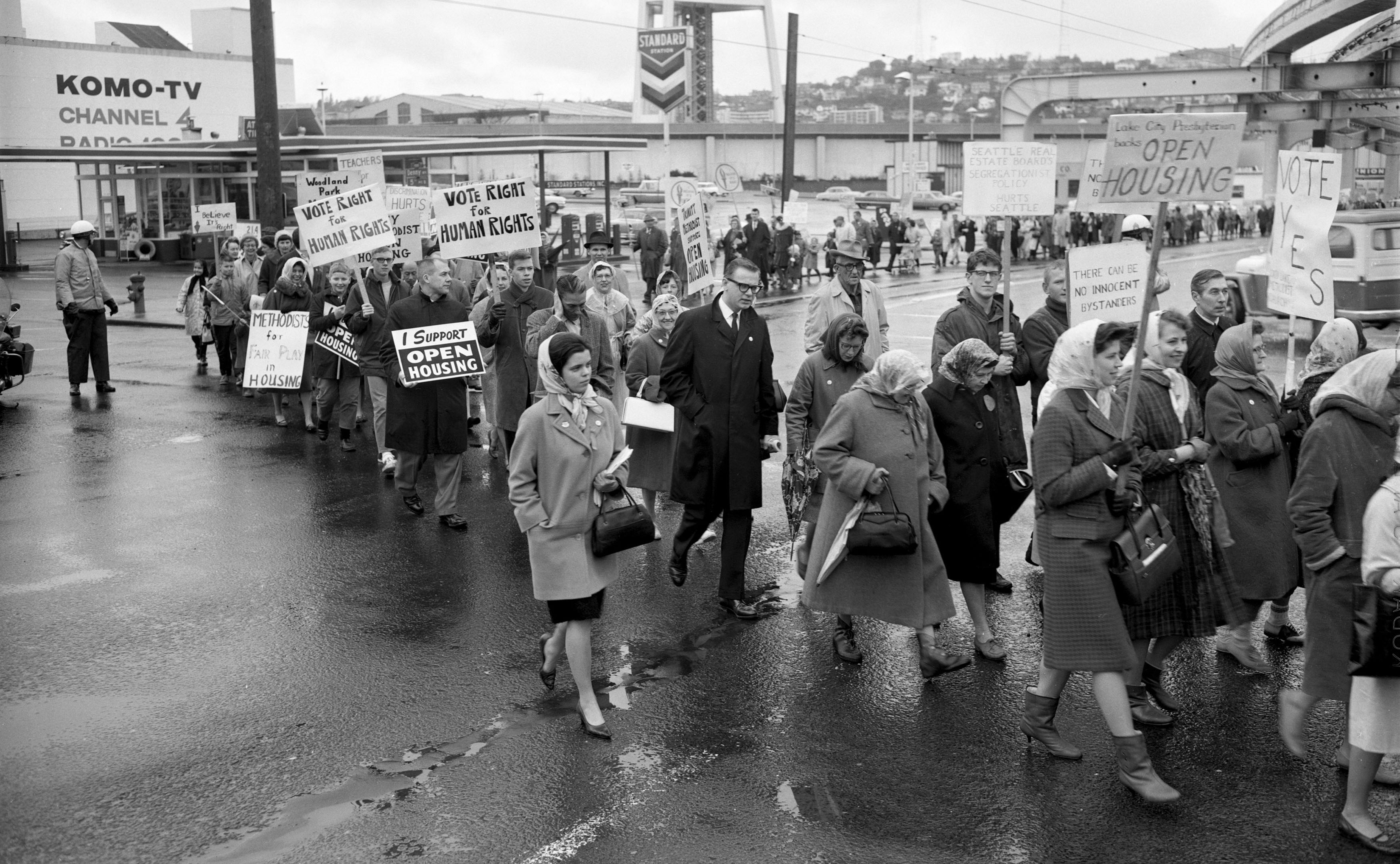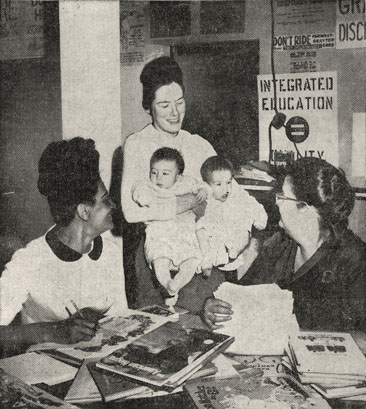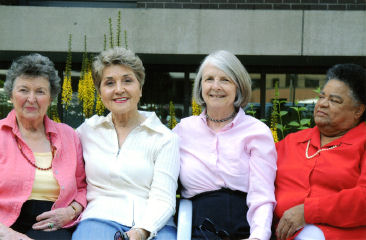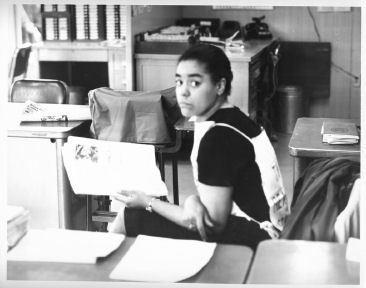Seattle in Black and White



Photo Credits: Seattle Post Intelligencer original photo has been lost; clipping from Special Collections Division, UW 288872, University of Washington Libraries.
Top of page photo credits: Richard Heyza/Seattle Times photograph 19640307.
Behind every picket, behind every shop-in, behind every negotiation, behind every community meeting or gathering women put in many hours of work. Women worked phone trees, knocked on doors, gathered statistics, wrote reports, designed handbills, organized boycotts, staffed mailing parties, typed leaflets and did all of the things required to organize and activate a community before e-mail and texting led to instant communication.
They were often women with husbands and children who also had demands on their time and energy. They were sometimes single students, sometimes the daughters of housemaids and unemployed fathers. They were part of the vast reservoir of women who were "free" before the women's movement moved them out of the house and into employment a half decade later. Their role in the movement was as backups, as soldiers in a battle led by Black men, the negotiators and leaders.
It was expected of them. They saw these activities as necessary and available to them; this was their way to be active and to contribute to change, not in the status of women but in the betterment of the racial community. Largely, these activities reflected the role of women more widely. Most white women in the workforce were secretaries, assistants and lower-level workers.
Only in hindsight was status an issue. At the time CORE was most active in changing the society and this was the paramount goal: getting men jobs, getting families homes in any community they could afford, making the wider society aware of racism and discrimination were the focus for CORE people, women or men, Black or white. Women might have been part of CORE negotiating teams, but they were usually in the background as note takers. Women chaired some committees such as employment or education and often were the main organizers in activities such as the school boycott but when meetings were held among the ministers or with employers, politicians and the police it was the men who represented CORE.
One activist woman wanted to become chair of Seattle CORE but was taken aside by a number of Black male leaders and told that she should not run. CORE's chair must be Black (she qualified) and male (she did not qualify). This issue did not become an organization-wide issue.
Women could accurately be described as the backbone of Seattle CORE. They were respected and appreciated in the roles that were allowed. And now it is largely women telling the story of the men and women who in the 60s started Seattle on a journey of greater awareness and transitioning to a more just society.

Authors' Photo Courtesy of Walter Bodle

Photo Credits: Seattle Municipal Archives photo, 63901.